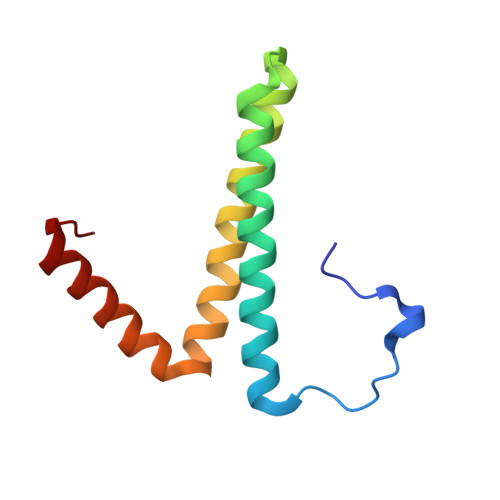Conservation of the structural and functional architecture of encapsulated ferritins in bacteria and archaea.
He, D., Piergentili, C., Ross, J., Tarrant, E., Tuck, L.R., Mackay, C.L., McIver, Z., Waldron, K.J., Clarke, D.J., Marles-Wright, J.(2019) Biochem J 476: 975-989
- PubMed: 30837306
- DOI: https://doi.org/10.1042/BCJ20180922
- Primary Citation of Related Structures:
5N5E, 5N5F - PubMed Abstract:
Ferritins are a large family of intracellular proteins that protect the cell from oxidative stress by catalytically converting Fe(II) into less toxic Fe(III) and storing iron minerals within their core. Encapsulated ferritins (EncFtn) are a sub-family of ferritin-like proteins, which are widely distributed in all bacterial and archaeal phyla. The recently characterized Rhodospirillum rubrum EncFtn displays an unusual structure when compared with classical ferritins, with an open decameric structure that is enzymatically active, but unable to store iron. This EncFtn must be associated with an encapsulin nanocage in order to act as an iron store. Given the wide distribution of the EncFtn family in organisms with diverse environmental niches, a question arises as to whether this unusual structure is conserved across the family. Here, we characterize EncFtn proteins from the halophile Haliangium ochraceum and the thermophile Pyrococcus furiosus , which show the conserved annular pentamer of dimers topology. Key structural differences are apparent between the homologues, particularly in the centre of the ring and the secondary metal-binding site, which is not conserved across the homologues. Solution and native mass spectrometry analyses highlight that the stability of the protein quaternary structure differs between EncFtn proteins from different species. The ferroxidase activity of EncFtn proteins was confirmed, and we show that while the quaternary structure around the ferroxidase centre is distinct from classical ferritins, the ferroxidase activity is still inhibited by Zn(II). Our results highlight the common structural organization and activity of EncFtn proteins, despite diverse host environments and contexts within encapsulins.
- Institute of Quantitative Biology, Biochemistry, and Biotechnology, School of Biological Sciences, The University of Edinburgh, Max Born Crescent, Edinburgh EH9 3BF, U.K.
Organizational Affiliation:

















